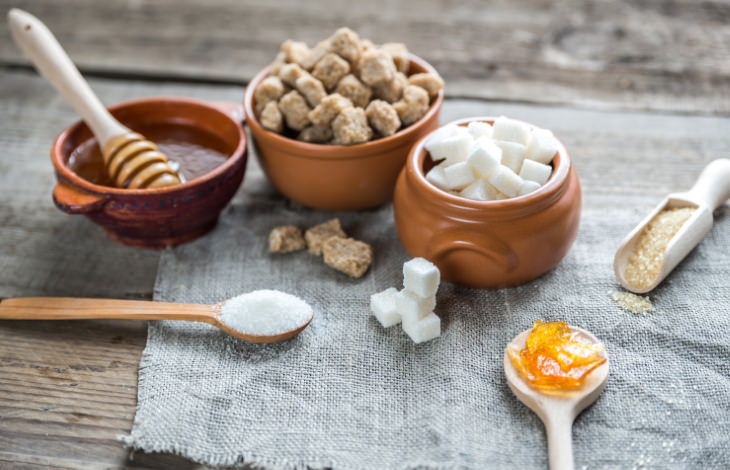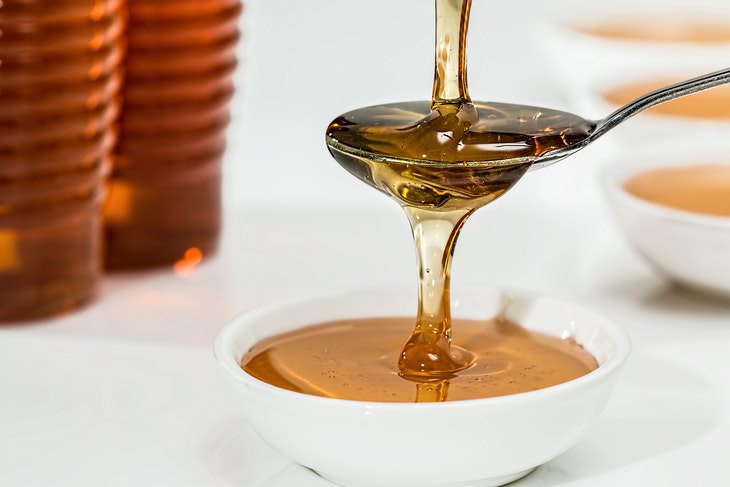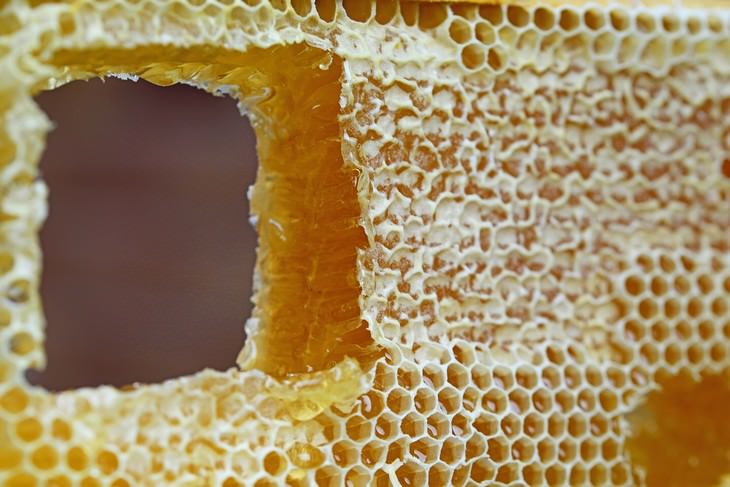

Sugar comes in many forms: white, brown, demerara, turbinado, and muscovado, to name just a few. Although each of these varieties has different properties and its own use in cooking and baking, all of these sugar varieties' chemical composition is roughly the same. They only differ in the proportion of molasses to sucrose crystals, and the size of said crystals.
As such, sugar is a processed food, which means that you won’t find crystallized sugar anywhere in nature. Sugar, also known as sucrose, is a combination of two naturally-occurring molecules - glucose and fructose. Sucrose is derived from sugar cane or sugar beat plants, which undergo several processing steps in order to become the white powder we add to our morning coffee.
During this purification process, sugar is stripped of any nutrients that occur naturally in sugar cane or sugar beets and all that’s left is pure sweetness.
Sugar is a product that’s quite low in calories and provides the body with fast fuel - there are only 16 calories in 1 teaspoon of sugar. At the same time, sugar is also virtually devoid of beneficial nutrients, such as vitamins and minerals, so its beneficial effect on the body is nonexistent.
Moreover, scientists have known for a while that eating too much sugar raises one’s risk of obesity, heart disease, and type 2 diabetes. This is why the American Heart Association recommends that you limit your daily intake of sugar to 100 calories (6 teaspoons) for most women and 150 calories (9 teaspoons) for men.
To learn more about the effects of sugar on our health and life, read our article Key Facts and Information About the Health Effect of Sugar.

Sugar is a no-fuss ingredient that lasts in a pantry for years and it plays well with other cooking and baking ingredients, so it’s virtually indispensable. Unlike fruit and other raw ingredients, sugar is ready for use and doesn’t require any preparation, which is why it is so widely used in cooking and baking.
Truth be told, most of us can hardly imagine preparing any dessert without sugar or a sugar substitute. This is also true about store-bought baked goods and even savory foods that almost always contain sugar in some shape or form, even if the producer is trying to conceal it in the ingredients list. Read more about the ways manufacturers sneak sugar into their products in our article titled 8 Methods Companies Use To Hide Sugar In Foods.

Unlike sugar, honey is a naturally-occurring type of food that’s produced by honey bees. This thick syrup ranges from a pale yellow to a dark brown color and comes in a variety of flavor profiles depending on the type of plant a specific bee population is pollinating. Like sugar, honey is mainly a mixture of fructose and glucose, with some added water. However, honey also contains several beneficial vitamins and other nutrients, namely:
- B vitamins
- Vitamin C
- Minerals
- Enzymes
- Antioxidants
- Amino acids.
Although most of these beneficial nutrients only exist in trace amounts in honey, it’s enough to impart raw honey with a variety of health benefits. For example, honey is famous for its antimicrobial properties, so much so that many wound-healing and burn-calming salves and creams contain honey as the main ingredient.
In addition, many of us use honey to help with a cough and a sore throat and swear by it. Finally, raw honey has trace amounts of pollen, so it can help people with mild seasonal allergies become less sensitive to pollen.
No matter which type of honey you favor - buckwheat, manuka, alfalfa, or golden blossom - they all contain quite a lot of sugar. Just one teaspoon of honey contains 22 calories, and most of those calories are from the sugars present in honey.
You shouldn’t dismiss the sugar content of honey just because it has health benefits. Even if you’ve replaced all the added sugar you consume with honey, it doesn’t mean that your cardiovascular system will become healthy, especially if you’re consuming too much of it.

For this reason, it’s useful to treat honey as sugar and still not exceed your daily intake of honey to 100 calories for women (about 4 teaspoons) and 150 calories (about 6.5 teaspoons) for men. It also needs to be pointed out that infants are not allowed to eat raw honey since it can contain potentially deadly botulism spores.
When it comes to using honey as a replacement for sugar in baked goods and other recipes, you’ll need to tweak each recipe, which isn’t always ideal. Since honey is a liquid, it means that you will need to reduce the overall amount of liquids used in the recipe by ¼. For example, if a recipe calls for 1 cup of milk, you’ll need to use ¾ of a cup of milk instead.
Needless to say, this can affect the texture of the resulting food, and not all recipes lend themselves to this replacement. In addition, honey contains more fructose than sugar, so you will likely need to reduce the amount of sweetener in the recipe by two if you’re using honey instead of sugar. Lastly, you need to keep in mind that honey has a more pronounced taste than sugar, so using it in a recipe or even a cup of tea may alter its taste.
Related Article: 7 Honey-Based Natural Home Remedies
The Bottom Line is that honey and sugar are not so different in terms of their health effects, especially to those who already suffer from diabetes, cardiovascular issues, and other health conditions. Therefore, you should use both of these sweeteners sparingly.
In addition, honey may not work as a replacement in all recipes because of its properties and pronounced taste. With that said, consuming honey within reason can offer some health benefits sugar doesn’t possess, so replacing the added sugar you use with honey can be a good idea whenever possible.